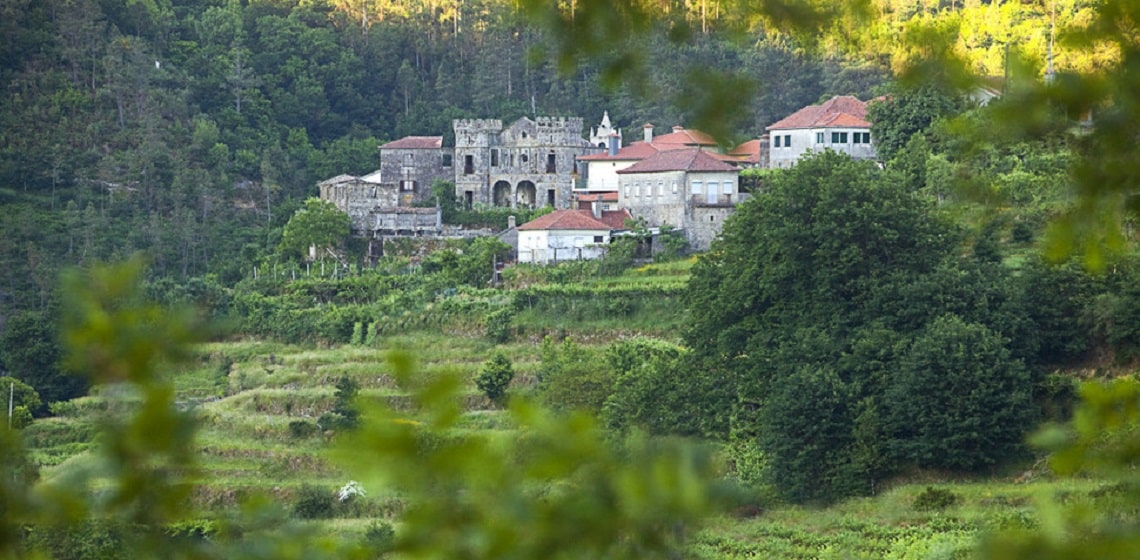Time is scarce, the budget is tight and, for now, you still don't have the ubiquity superpower. If you can't decide between spending a few days in a big city and coordinating your biological rhythm with that of Mother Nature, we have good news: there are 20 villages near Porto that, in addition to being charming, are (in the worst case) 2 hours from Invicta city.
Discover these small wonders, stopped in time, and relax from the hustle and bustle of the daily routine. After a few intense days in the second-largest city in Portugal, where the offer for the visitor seems limitless, give in to the charms of one of the 20 villages near Porto and take a trip back in time. Get to know legends that don't appear in the history books. Observe fauna and flora species in their natural habitat. Go hiking, or try other activities, with incredible landscapes as a backdrop. Let yourself be enchanted by typical houses built in granite, shale or slate. Imagine how people used to live in the past, and let yourself be embraced by the hospitality of the local population. And, of course, don't forget to taste the most typical and genuine dishes from the North of Portugal.
All About Portugal suggests these 20 villages near Porto, explore them at a slow pace and without moderation!
Aguiar de Sousa - Senhora do Salto (00h30 - 28km)

A space with several points of interest, namely the Boca do Inferno (Hell's Mouth), a cave, the chapel of Our Lady of Salto and the vestiges of a bridge that led to the mines.
Adaúfe (00h50 - 63km)

Little river beach with a wide grassy area around, where you can sunbathe, picnic and practice some sports.
Trebilhadouro (00h50 - 62km)

Located on the slopes of Serra da Freita, this quaint village is currently practically uninhabited, but fully recovered, offering tourist homes for holidays.
Gondarém (00h50 - 48km)

A small rustic place composed of streets and typical old stone houses. Quite picturesque and recommended.
Ovelhinha (00h55 - 63km)

The parish of Gondar is crossed by two rivers that flow to the Tâmega river: Fornelo and Ovelha. The villag of Ovelhinha, located on the bank of one of those rivers, stands out for its river beach (beach of Ovelhinha) and by the roman bridge that crosses the river. Once the main village of the Gestaçô parish, the village currently has only about one hundred inhabitants. Its history is closely linked to the French invasions of the early 19th century, when several manors were set on fire by the invaders.
Agra (1h20 - 107km)

A strongly rural village, surrounded by rather lovely landscapes. The inhabitants are mostly farmers and shepherds. The granite houses lend it a traditional atmosphere. Agra is known as the brithplace o the traditional "mantas de burel".
Soajo (1h30 - 120km)

This is one of the largest concentrations of granaries of Portugal, with all buildings of stone. There are 24 type granaries galaico-Minho, being the oldest of the year 1782. It is possible to see the sacred character given to the site, due to the crosses on top of granaries for, according to the local people, divine protection than there is guarded, often the only means of survival.
Lindoso (1h30 - 125km)

The granaries of Lindoso fit in the kind of narrow and granaries of Plumb walls. Focus around a single threshing floor, rectangular, revealing the importance of the collective work of the mountain communities.
Lamas de Olo (1h30 - 115km)

An old and rustic village composed of schist and culm houses. According to the local tradition, the lower floor of the constructions is still used as "loja" (a warehouse) for animals. A special note to the granite water-mills, "canastros" or "espigueiros" (corn warehouses), granite thrashing-floors and typical fountains with the traditional places for the cattle. A region with abundant archaeological vestiges. The inhabitants of Lamas de Olo are mostly farmers and shepherds.
Aldeia de Ucanha (1h30 - 135km)

A village located between the meanderings of the River Varosa, it was the county seat until the 19th century, the time of liberal reforms. This cluster was located within the boundaries of the Cistercian Monastery of Salzedas. The tower and bridge complex, classified as a National Monument, is considered the most complete example of a medieval bridge with a protection and toll tower.
Castro Laboreiro (2h00 - 150km)

Ancient medieval fortification located at an altitude of 1033 meters. Currently, almost in ruins, it retains an enclosure delimited by walls and two doors. The Porta do Sapo (Frog Door) stands out. At the site of the primitive rock fortification, there are traces of prehistoric and Iron Age occupations.
Branda da Aveleira (2h00 - 145km)

The "branda" is the place where one spends time during the summer, the time of the year when the weather is smoother (brando), as opposed to the winter time, when the shepherds return to their homes in the village. Hence, during the hot summer months the lowest altitudes become available for sowing corn and beans. The brandeiros tradition was at risk during the 60s and 70s, the epoch with the most migration. Later on, many have returned to Gave and to the Branda.
Pitões das Júnias (2h00 - 155km)

In this traditional village of the Lands of Barroso, one can still view typical cul covered houses. A special note to the church and the ruins of the beneditin convent of Saint Maria, a national monument, whose existence may date back to the 9th century and still has the romanesque portico of the old church by the convent. Near Pitões das Júnias there is a natural waterfall of rare beauty.
Recommended







